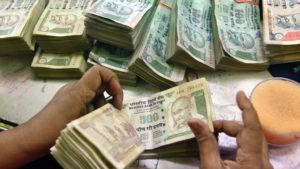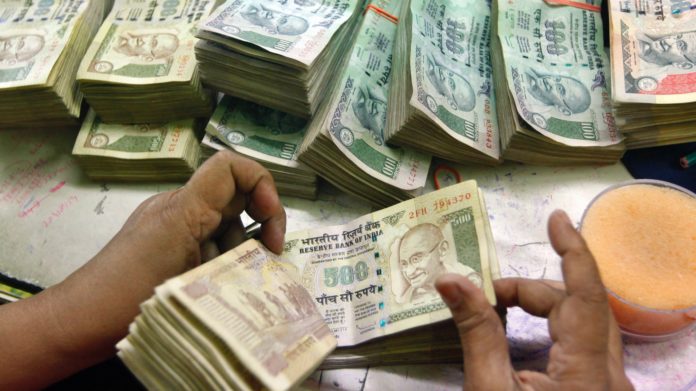 Having initially invited a mixed response from general public besides witnessing the much-anticipated theatrics of political rivals, Prime Minister Narendra Modi-led government finally appears to be having the last laugh, Sandeep Datta and Akash Tomer of Elets News Network (ENN) explore the post-demonetisation scenario in the country at large.
Having initially invited a mixed response from general public besides witnessing the much-anticipated theatrics of political rivals, Prime Minister Narendra Modi-led government finally appears to be having the last laugh, Sandeep Datta and Akash Tomer of Elets News Network (ENN) explore the post-demonetisation scenario in the country at large.
Not many may forget the historical evening of November 8, 2016 when Prime Minister Modi left millions of people flabbergasted, literally pushing them to run pillar to post to withdraw cash from the ATMs as Rs 500 and Rs 1,000 notes were declared invalid. The following weeks were full of hardship for every household which had not familiarised itself with net banking or phone banking – the new age modes of financial transactions.
It may be mentioned that demonetisation is considered a radical monetary step in which a currency unit’s status as a legal tender is declared invalid. It is usually done whenever there is a change of national currency, replacing the old unit with a new one.
Prior to the Indian government’s move, such a step was taken when the European Union decided to adopt Euro as their currency. However, the old currencies were allowed to convert into Euros for a period of time to ensure a smooth transition through demonetisation. Zimbabwe, Fiji, Singapore and the Philippines were other countries to have opted for currency demonetisation.
The Government’s Stance
As per the central government’s explanation, the move to demonetise high value currency notes was aimed at hitting multi-pronged targets including that of curbing the menace of black money and counterfeit currency being circulated by some countries to support terrorism and other anti-national activities in the nation. It was decided to do it by reducing the amount of cash available in the system.
It may be recalled the demonetisation move was not undertaken for the first time. It was first implemented in 1946 when the Reserve Bank of India (RBI) demonetised the then circulated Rs 1,000 and Rs 10,000 notes. The government of that time introduced higher denomination banknotes in Rs 1,000, Rs 5,000 and Rs 10,000 in a fresh mold eight years later in 1954 before the Morarji Desai government demonetised these notes in 1978.
In the latest, the transformative step brought some temporary hardship for citizens. For the larger benefit of the nation, common man underwent the temporary discomfort but largely with a smile. Thanks to bankers’ resolute approach to assist a huge wave of customers, no stone was left unturned by the bank staff to make Modi government’s high-stake move a success.
A study conducted by Indian Statistical Institute, Kolkata on behalf of the National Investigation Agency (NIA) suggests that fake Indian currency notes amounting to Rs 400 crore are in circulation in the country at any given point of time and around Rs 70 crore fake notes are pumped into Indian economy every year. The estimation is based on recovery and seizure made by various agencies, though actual figure might be much larger.
Till November, 2016, the prevailing situation was as follows:
Digital Banking: The 500 and 1,000 rupee notes made up about 86% of the currency in circulation by value in the country and represented the maximum—and most popular—currency denominations. An estimated 95% of transactions in the country were being carried out in cash, and for those squirreling money away, it was a necessity to survive.
To support the public, banks have chosen and encouraged the digital way of transactions. Digital banking companies have also risen to the challenge, setting up shop in more convenient places to enable people to sign up and use their money as they wish. Paytm, an e-wallet firm, has witnessed a huge surge in transactions, for example—even a roadside stall has started to accept payments through e-wallet.
Demonetisation Draws Gujarat Village into Limelight
The removal of old high value notes has brought the country’s first digital village, Akodara, 96 km from Ahmedabad, into the limelight. Today, majority of the 1,200 people in Akodara buy everything from wheat flour to potato chips through mobile banking and have little to worry about when it comes to the demonetisation.
The Real Impact
Black Money: It’s pertinent to understand that of the Rs 17 lakh crore of total currency in circulation in the country, black money is estimated at mind-boggling Rs 3 lakh crore. Black money operators run a parallel economy which shakes the very foundation of the Indian economy.
Economy: The move, primarily aimed at cleaning-up illegal cash, may have yet to yield its actual results but a section of experts are optimist that it will lead to the country’s economic turnaround in near future. But how it will be possible? First, it brings more borrowings to the exchequer, improving inflation outlook and increasing India’s gross domestic product (GDP). Second, it may revive investment opportunities and give a fillip to infrastructure and the manufacturing sector.
A Setback to ‘Note-bank politics’: The announcement, which came in the run up to the crucial assembly elections in Uttar Pradesh, Punjab, Goa, and Uttarakhand, proved to be shocking news for many political parties, especially for those who largely depended on power of black money during polls.
The move is also hoped to help make the election process clean and transparent.
Real estate cleansing: According to an estimate at least 40 per cent of the real estate transactions in Delhi-NCR are in black. The demonetisation move is also likely to curtail the flow of black money into the real estate sector, making the much needed correction in the sector and leading to an unexpected dip in land and property prices.
Hawala transactions: Demonetisation has crippled the hawala rackets. Hawala is a method of transferring money without any actual money movement.
Hawala route has been used as a means to facilitate money laundering and terror financing for years with black money suddenly being wiped out of the market, hawala operations have suffered a setback.
Counterfeit currency: Counterfeit currency seriously devalues the real worth of Indian currency. Demonetisation has dealt a death blow to the counterfeit Indian currency syndicate operating both inside and outside the country.
Terror financing: Terror financing is sourced through counterfeit currency and hawala transactions. Fake currency circulation is routed through a multi-layered network of hawala operators, closely linked to gambling and smuggling of drugs, opium and arms.
With the circulation of counterfeit Indian currency completely stalled and hawala transactions stopped for now, all windows for terror financing have been attempted to close down.
Other Advantages:
The RBI has also appealed to citizens to use internet and mobile banking at least in the short-term, as it works to alleviate the pressure on the physical currency.
Networking companies have set up the infrastructure and services in such a manner that will be helpful for the digitalisation of banking services.
With the demonetisation and digitalisation now bringing the country’s economy in the fast mode, in the long-run, one can be optimist of bright new economic development of the country in the times to come.
Elets The Banking and Finance Post Magazine has carved out a niche for itself in the crowded market with exclusive & unique content. Get in-depth insights on trend-setting innovations & transformation in the BFSI sector. Best offers for Print + Digital issues! Subscribe here➔ www.eletsonline.com/subscription/





















